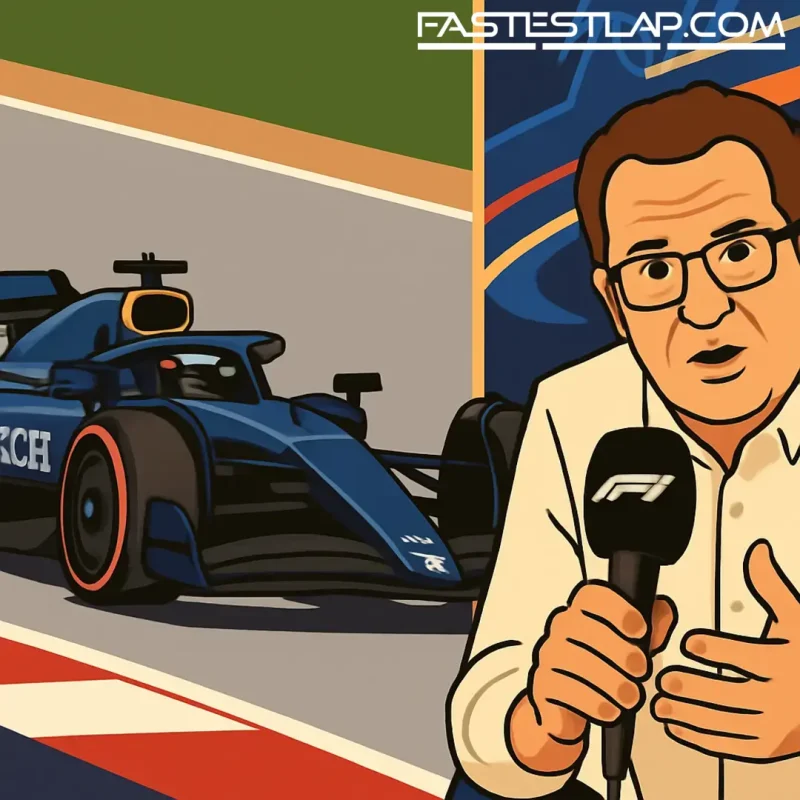‘Too early’ to panic: FIA’s Tombazis cools Albon’s warning over 2026 mental load
Alex Albon thinks F1’s 2026 cars will test drivers’ brains as much as their bravery. Nikolas Tombazis isn’t convinced.
The Williams driver recently came away from simulator runs warning that next year’s machines — with big active aero swings and a far fatter electric share of the power split — will force drivers to juggle more systems while re-learning how to hustle the car. In his words, the smart and adaptable will thrive by “understanding how to use the engine and the deployment” and “abuse the system” better than others.
Tombazis, the FIA’s single-seater chief, appreciates the point. He just thinks it’s premature, and not the headline of 2026.
“It’s a bit too early,” he said in an interview. “Drivers with high mental capacity have always been rewarded in Formula 1 — that hasn’t changed since the Senna and Schumacher years.” The governing body’s aim, he stressed, is to ensure the new cars still drive naturally and the core skills remain decisive, not a driver’s capacity to become an on-board systems engineer. “We don’t want drivers to need a PhD to drive the car.”
That gets to the heart of the 2026 brief. The power units keep the 1.6-litre V6, but the electrical side grows to roughly a 50/50 split with the combustion engine. On the chassis, active aero arrives to balance drag and downforce for those mixed-energy stints. And, yes, that can mean plenty of switches and strategies for the human in the cockpit — in theory.
In practice, Tombazis says the FIA and teams are still refining what’s automated, what’s simplified and what remains in the driver’s hands. Some of the sim feedback that’s alarmed a few drivers, he argues, has already been acted on. “Sometimes they’ve driven a particular condition, identified an issue, and that has since been resolved,” he explained. The process is still moving, he added, and comments made today don’t yet reflect the final product.
There’s also the age-old perception problem whenever F1 turns a page: new rulesets tend to reset performance, not blow the doors off. If a driver jumps out of a current car and into a slightly slower one, nobody climbs out saying, “I’m delighted.” Tombazis didn’t shy away from that reality. The key, he said, is that 2026 must avoid “unnatural characteristics” and resist overburdening whoever’s strapped in.
Albon’s view isn’t without merit, and it echoes memories of other complex eras — think energy deployment tricks and brake-by-wire learning curves — where drivers who read the tech best found free lap time. The Thai-Briton’s takeaway from Williams’ early sim work is that adaptability will be at a premium: changing driving styles, understanding new deployment windows and finding where the car wants to be driven, rather than where instinct says it should be.
That tension — between tech and touch — is exactly where 2026 will live. The FIA wants the software and control layers to melt into the background, making the car feel intuitive. Drivers, understandably, want clarity well before they roll out for the first real laps next year.
For now, chalk it up as a healthy push-and-pull. The rulemakers are still sanding edges off a sweeping package; the drivers are already gaming it out for advantages. If history is a guide, the best of the grid will turn the extra inputs into lap time, the governing body will pare back any needless complexity, and the stopwatch will sort the rest.
Albon’s warning shot? Worth listening to. Tombazis’s cool hand? Necessary. The truth of 2026 — and how much “mental capacity” it really demands — will only reveal itself when the cars stop being CAD drawings and start being physics.




